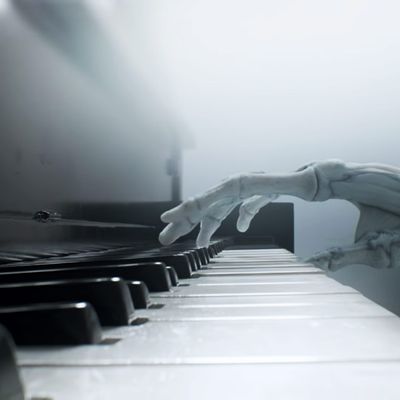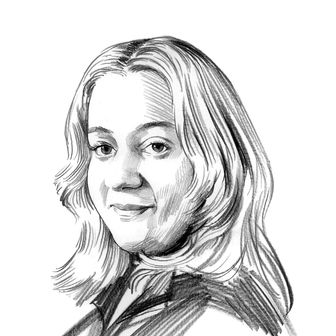
Before you begin questioning your timeline and theorizing what was going on in Sunday’s season two premiere of Westworld, there’s a chance you had a blink-and-missed-it moment during the show’s opening title sequence. The spooky, piano-driven score was the same, sure. But did you notice any aesthetic differences compared to the season before? Say, the inclusion of some semi-extinct grassland animals and tasteful saloon headwear? It was a choice made by showrunners Jonathan Nolan and Lisa Joy, alongside Patrick Clair and his team at Elastic, the production studio hired by HBO to design the titles, as a means of creatively shepherding the series into its newest chapter — although it took a bit of convincing at first.
“I’m always been wary of season twos,” Clair told Vulture. “I look to some of my favorite opening titles, like Mad Men, and they were the same throughout the duration of the series. It says something really fundamental about the character’s journey. I feel like there’s not a lot of value in making some aesthetic changes for the sake of it.” However, after a few conversations with Nolan and Joy, Clair became convinced this would be an “interesting challenge” that few television shows have embraced — the titles would still be “hitting the same emotional beats and using the same music with very similar structure,” only swapping out a handful of images that better reflect the emotional resonance of the season. Or, as Clair put it, reinventing the series while staying within the constructs they had already established.
“You have some very obvious swapouts, like the horse has become the buffalo,” Clair said. As Nolan told us at the Westworld red-carpet premiere, they changed the animal because of “the long history of the American Buffalo as a tragic symbol of the west.” “There were millions of them, and the westward expansion, by the time they were done, they were almost all gone,” he explained. “So as a metaphor for our hosts, the idea of a life form that’s supposed to share the west with human beings, and the humans weren’t terribly keen on keeping that dynamic alive, I thought it was a perfect addition.”
Clair continued, “then we have things like, last season we saw into the eyes of the host in an incredibly close-up way. So we thought, What is there in this world that can be this same thing in a physical sense? That’s when we found the idea that we can look at the pearl, the brain of the host, and use that in exactly the same way.”
But for Clair, the most emotionally satisfying moments of season one always involved a relationship between a mother and child, prompting him to include that imagery right as the music begins to intensify, which replaces a couple having sex in the original credits.
“The idea that these beings and creatures could have the sophistication and independence to fall in love was really compelling,” he said. “The idea that we could take the lovers — the emotional core of what we’re trying to do with the main titles — and change that to be a mother with a child, was a really interesting change, and one we relished.”
The buffalo, brain-pearl, and maternal bonds aside, the two additional images that cropped up in the new titles are the mechanical brushing of a woman’s hair and the Man in Black’s signature hat. “What we’re always looking for is finding something that feels human in a really unsettling way,” he explained about those specific aesthetics. “It was fascinating to take something that is creepy and wonderful at once, like this beautiful platinum hair, and say, How would we create that? How would you touch that hair? So we came up with this device that’s effectively weaving this hair, which is emotionally unsettling. As for the Man in Black’s hat, it’s become an icon of a certain thread of the show. The chance to include it in such a way where it’s tragically falling into the abyss and use this eclipse-like imagery of it, we thought was a cool way to end the sequence.”
There were a few other images that Clair played around with to include in the titles, but due to time constraints, it wasn’t possible this time around. (Hey, there’s always season three.) If you’d like to know what they are, too bad, because Clair knows the ramifications of oversharing in the age of prestige TV: “I think I’d get in far too much trouble from HBO if I did that.”
Additional reporting by Scott Huver.





